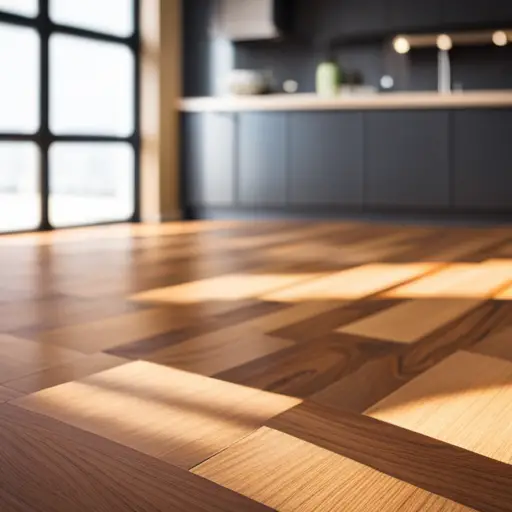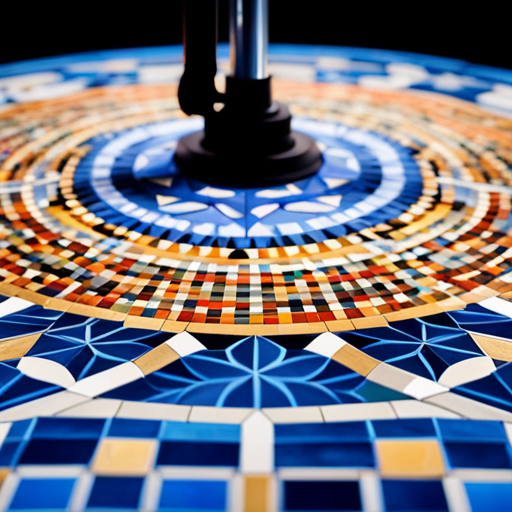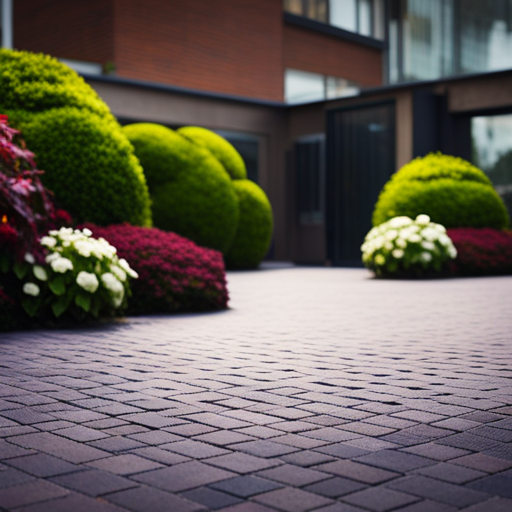Understanding Engineered Wood Flooring

Despite its name, engineered wood flooring is not your typical hardwood. This versatile flooring option combines the natural beauty of wood with enhanced durability and stability.
Understanding the construction, installation process, and maintenance of engineered wood flooring is key to making an informed decision for your space. In this article, we will delve into the intricacies of engineered wood flooring, shedding light on its benefits and how it compares to other flooring options.
What Is Engineered Wood Flooring
The engineered wood flooring is a composite product made from layers of wood veneer pressed and glued together to create a stable and durable material for flooring. This type of flooring comes in various forms, including single plank, two-strip, and three-strip designs.
The manufacturing process of engineered wood flooring involves several key steps. Initially, the wood veneer is obtained by rotary peeling or slicing. The veneer layers are then stacked in a crisscross pattern and bonded together under heat and pressure using strong adhesives. This construction method enhances the stability and resistance to moisture of the flooring, making it suitable for areas where solid hardwood may not be recommended, such as basements or areas with fluctuating humidity levels.
Furthermore, engineered wood flooring can be installed as floating floors, glued down, or nailed, providing versatility in application. The manufacturing process and variety of types make engineered wood flooring a popular choice for homeowners seeking the aesthetics of hardwood with added durability and flexibility.
Advantages of Engineered Wood Flooring
One significant advantage of engineered wood flooring is its enhanced stability and resistance to moisture, making it a preferred choice for areas with fluctuating humidity levels where solid hardwood may not be recommended. Additionally, engineered wood flooring offers exceptional durability due to its layered construction, allowing it to withstand temperature and moisture variations better than solid wood. This durability makes it a cost-effective option as it requires less maintenance and has a longer lifespan than traditional hardwood flooring. Moreover, the installation of engineered wood flooring is typically easier and less time-consuming than solid hardwood, leading to cost savings on labor. The following table illustrates the comparative advantages of engineered wood flooring over traditional solid hardwood:
| Advantage | Engineered Wood Flooring | Solid Hardwood |
|---|---|---|
| Stability | High | Susceptible |
| Resistance to Moisture | Excellent | Limited |
| Durability | Exceptional | Moderate |
Understanding the Construction of Engineered Wood Flooring
Engineered wood flooring is constructed from multiple layers of wood, each with its own unique properties and benefits.
Understanding the layered wood construction and the specific advantages it offers is essential to gaining a comprehensive understanding of the product.
Layered Wood Construction
Layered wood construction is a fundamental aspect of engineered wood flooring. It contributes to its durability and stability. This manufacturing process involves the bonding of multiple layers of wood together, each with its grain direction. It forms a strong and resilient composite material. The layers typically consist of a top hardwood veneer, a core of high-density fiberboard or plywood, and a stabilizing bottom layer. These layers are bonded using high pressure and heat. This creates a product that is less susceptible to expansion and contraction due to changes in humidity and temperature.
The layered wood construction also allows for wider plank widths and longer lengths. This provides a more uniform and aesthetically pleasing appearance. Understanding the intricacies of this construction is essential to appreciating the numerous benefits of engineered wood flooring.
Benefits of Engineered Flooring
Understanding the construction of engineered wood flooring provides a clear insight into the numerous benefits it offers. Engineered wood flooring is renowned for its durability and cost-effectiveness, making it an attractive option for homeowners and businesses alike. Here are some key benefits of engineered wood flooring:
| Benefits | Description |
|---|---|
| Durability | Engineered wood flooring is designed to withstand high levels of foot traffic and moisture. |
| Cost Effectiveness | It is often more affordable than solid wood flooring, with a similar aesthetic appeal. |
| Versatility | Engineered wood can be installed in areas where solid hardwood may be impractical. |
Engineered wood flooring not only offers durability and cost-effectiveness but also provides a versatile flooring solution for various environments. This makes it a popular choice for many discerning customers. Moving on to the subsequent section, let’s delve into the installation process for engineered wood flooring.
Installation Process for Engineered Wood Flooring
During the installation process for engineered wood flooring, careful attention must be paid to the subfloor preparation. Proper subfloor preparation is crucial for a successful and long-lasting installation.
Here are some installation tips and common mistakes to keep in mind:
-
Moisture Testing: Before installation, it’s essential to conduct moisture testing on the subfloor to ensure it meets the manufacturer’s specifications. Moisture-related issues are a common cause of problems with engineered wood flooring.
-
Acclimatization: Allowing the flooring to acclimate to the environment where it will be installed is vital. Failure to acclimate the wood flooring can lead to problems such as warping or buckling after installation.
-
Professional Installation: While engineered wood flooring can be DIY-installed, it’s often best to have it installed by a professional. Improper installation, such as failing to leave expansion gaps, can lead to serious issues down the line.
Following these tips and avoiding common mistakes will help ensure a successful installation of engineered wood flooring, providing a beautiful and durable floor for years to come.
Maintenance Tips for Engineered Wood Flooring
To maintain engineered wood flooring, regularly clean and sweep the surface to remove dirt and debris. This helps prevent scratches and keeps the floor looking its best. When cleaning, avoid using excessive water, as it can damage the wood. Instead, use a damp mop or cloth to wipe up spills and spots. Additionally, consider these cleaning techniques and tips to ensure the longevity of your engineered wood flooring:
| Cleaning Techniques | Preventing Scratches |
|---|---|
| Use a hardwood floor cleaner recommended by the flooring manufacturer. | Place felt pads under furniture legs to prevent scratches from movement. |
| Avoid using harsh cleaning chemicals or abrasive tools that can damage the floor’s finish. | Use area rugs in high-traffic areas to minimize wear and tear on the wood. |
| Wipe up spills immediately to prevent moisture from seeping into the wood and causing damage. | Trim pet’s nails regularly to prevent scratches on the wood surface. |
Comparing Engineered Wood Flooring to Other Options
When comparing engineered wood flooring to other options, it is essential to consider the unique combination of durability and cost-effectiveness it offers. Engineered wood flooring stands out in a comparison for several reasons:
-
Durability: Engineered wood flooring is highly durable, with its multi-layer construction providing stability and resistance to temperature changes and moisture. This makes it a superior choice over solid hardwood flooring, which can be prone to warping and shrinking in high-moisture environments.
-
Cost: In comparison to solid hardwood flooring, engineered wood flooring tends to be more cost-effective. Its engineered construction allows for a lower price point while still providing the aesthetic appeal and durability of hardwood.
-
Environmental Impact: Engineered wood flooring is often considered more environmentally friendly than solid hardwood. By using less hardwood overall and incorporating sustainable wood sources, engineered wood reduces the impact on natural forests.
In essence, when evaluating flooring options, engineered wood stands out for its impressive durability, cost-effectiveness, and positive environmental impact, making it a compelling choice for many homeowners and commercial spaces.
Frequently Asked Questions
Can Engineered Wood Flooring Be Installed in Bathrooms and Kitchens?
Engineered wood flooring can be installed in bathrooms and kitchens. It offers good moisture resistance, but proper installation and maintenance are crucial for durability. Sealants and regular care help protect the floor in these areas.
Are There Any Environmental Benefits to Choosing Engineered Wood Flooring Over Traditional Hardwood?
Considering the environmental impact, sustainability, and cost comparison, engineered wood flooring offers several benefits over traditional hardwood. Its installation process, maintenance tips, and durability testing make it a compelling choice for eco-conscious consumers.
What Is the Average Lifespan of Engineered Wood Flooring?
The average lifespan of engineered wood flooring is approximately 20-30 years, depending on maintenance and wear. With proper care and maintenance, engineered wood flooring can maintain its quality and aesthetic appeal for a considerable duration.
Can Engineered Wood Flooring Be Refinished Like Traditional Hardwood Flooring?
Yes, engineered wood flooring can be refinished like traditional hardwood flooring. The refinishing process involves sanding down the top layer and applying a new finish. Regular maintenance is essential to prolong its lifespan.
Are There Any Special Considerations for Maintaining Engineered Wood Flooring in High-Traffic Areas?
When maintaining engineered wood flooring in high-traffic areas, durability and moisture resistance are crucial. Consider refinishing options, installation considerations, and the material’s environmental impact. Regular cleaning and using protective measures can help preserve its appearance.
Conclusion
In the grand tapestry of flooring options, engineered wood stands as a resilient and versatile choice, offering a blend of natural beauty and practicality. Its layered construction, with a veneer of real wood, provides a durable and stable foundation for any space.
When compared to other flooring options, engineered wood emerges as a timeless classic, embodying the harmony of nature and craftsmanship.

Rubin Everest, a seasoned expert in the world of flooring, brings a wealth of knowledge and passion to the surface. As the mind behind ebbow.com, Rubin is dedicated to sharing insights on the latest trends, innovative solutions, and expert advice in the realm of flooring. Whether you’re seeking practical tips for installation or design inspiration, Rubin Everest is your go-to source for all things flooring-related, making your journey to the perfect floor an informed and enjoyable experience.





